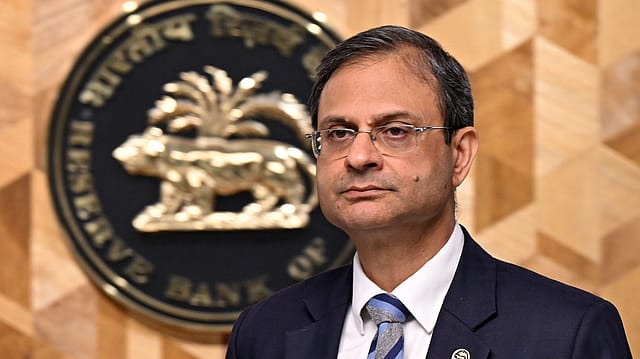RBI's repo rate cut to boost credit, growth, and consumption: India Inc
ADVERTISEMENT

With the Reserve Bank of India's (RBI) announcement of its first repo rate cut in nearly five years, the new RBI Governor and the Monetary Policy Committee (MPC) have delivered a widely anticipated 25bps policy rate cut while maintaining a "neutral" stance, leaving room for further action in the next meeting. Today’s measures, combined with the Budget’s benefits for the middle class, are expected to boost liquidity, ease borrowing costs, and support economic growth amid moderating inflation expectations for FY26.
This was the first monetary policy statement by new RBI Governor Sanjay Malhotra, who took over from Shaktikanta Das in December last year. Here’s how corporate stakeholders perceive the impact of the RBI’s repo rate cut.
Ranen Banerjee, Partner and Leader, Economic Advisory, PwC India, said the MPC likely took comfort from expectations of moderating food inflation and contained core inflation, which led to an inflation estimate of 4.2% for FY26. “It has delivered the necessary monetary policy support to the economy. Combined with the consumption boost from the tax relief announced in the Budget, this should drive demand and push the FY26 growth rate toward the higher end of the 6.3% to 6.8% range projected in the Economic Survey.”
Sudipta Roy, Managing Director & CEO of L&T Finance Ltd, noted that, coupled with last week’s record tax cuts, the policy rate cut will help reinvigorate credit channels in the economy. “The RBI’s proactive liquidity support while maintaining a neutral stance is an excellent step in balancing global headwinds while keeping options open to respond to evolving financial conditions. As always, the RBI remains ahead of the curve in its focus on consumer protection and mitigating cyber risks. The introduction of a separate domain for the financial sector is a welcome move in this regard.”
December 2025
The annual Fortune 500 India list, the definitive compendium of corporate performance, is out. This year, the cumulative revenue of the Fortune 500 India companies has breached $2 trillion for the first time. Plus, find out which are the Best B-schools in India.
Yashish Dahiya, Chairman & Group CEO of PB Fintech, said the move aligns with widespread expectations from the RBI to boost economic growth. “With the Union Budget laying a strong foundation for macroeconomic stability, this rate cut underscores policymakers' commitment to driving growth. By lowering borrowing costs and providing recent liquidity support, the RBI is empowering businesses and consumers to accelerate economic expansion.”
V. P. Nandakumar, MD & CEO of Manappuram Finance, pointed out that with the standing deposit facility now at 6%, down from 6.25%, and the marginal standing facility and bank rates at 6.50%, the decision is expected to ease borrowing costs and fuel credit demand. “It provides a timely boost for sectors such as housing, MSMEs, and consumer finance, positively impacting both individuals and businesses on their growth journeys.”
The RBI’s MPC forecasts CPI inflation for 2024-25 at 4.8%, with Q4 at 4.4%. Assuming a normal monsoon next year, CPI inflation for 2025-26 is projected at 4.2%. Sanjaya Mariwala, President of the IMC Chamber of Commerce and Industry and Executive Chairman & Managing Director of OmniActive Health Technologies, described the move as a "positive step." Expecting further cuts in the near future, he noted that with inflation projected to ease to 4.2%, reducing the policy repo rate will benefit both companies and consumers. “We remain optimistic that the Reserve Bank’s focus on balancing growth, inflation, and financial stability will foster a more supportive environment for businesses. The sector looks forward to policies that enhance credit availability, regulatory transparency, ease of doing business, and the global competitiveness of Indian companies.”
Deepak Ramaraju, Senior Fund Manager at Shriram AMC, cautioned that given the weakness in the rupee against the U.S. dollar and uncertainty over potential U.S. tariffs, the RBI may delay future rate cuts. “The RBI will closely monitor inflation data and currency movements before making further rate cuts. In our view, interest rates are likely to remain unchanged in April.” He added that sectors such as automotive, real estate, and discretionary segments—including jewellery, consumer durables, and white goods—could perform relatively well, while travel, tourism, and quick-service restaurants may also see sustained demand. “As demand strengthens, lower interest rates could have a positive impact on private capital expenditure as well.”
Despite optimism surrounding the repo rate cut, the new RBI Governor, in his first post-MPC meeting address, cautioned that the Indian economy is not immune to global uncertainties. He also acknowledged recent pressure on the Indian rupee, highlighting that emerging market economies have experienced capital outflows, leading to sharp currency depreciations.
